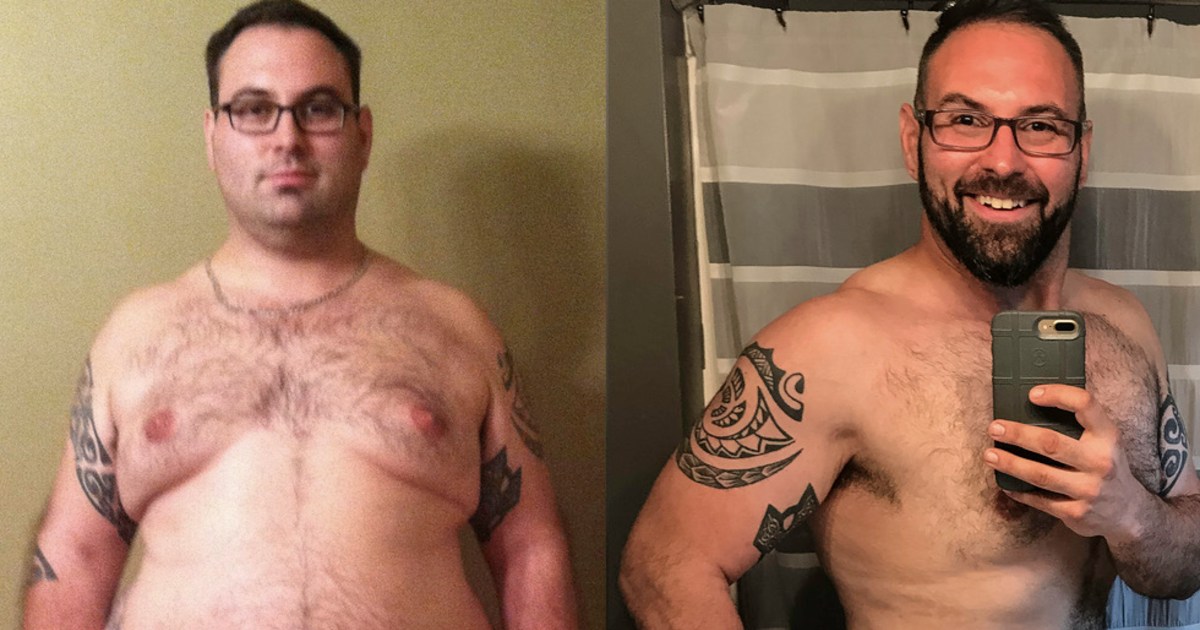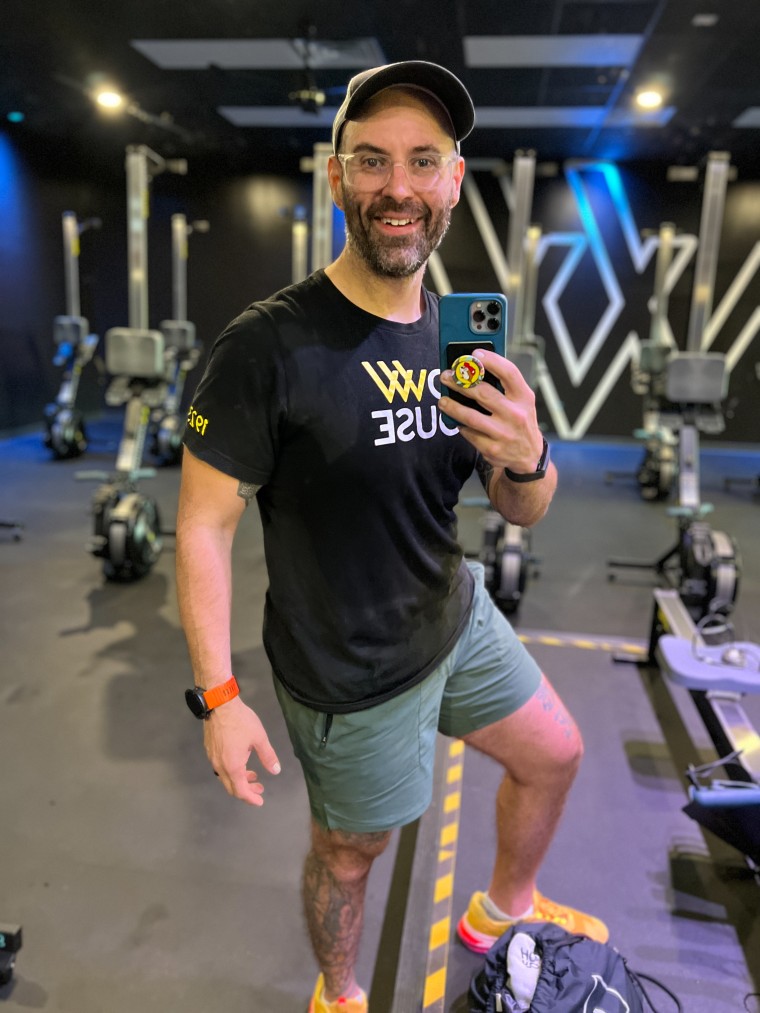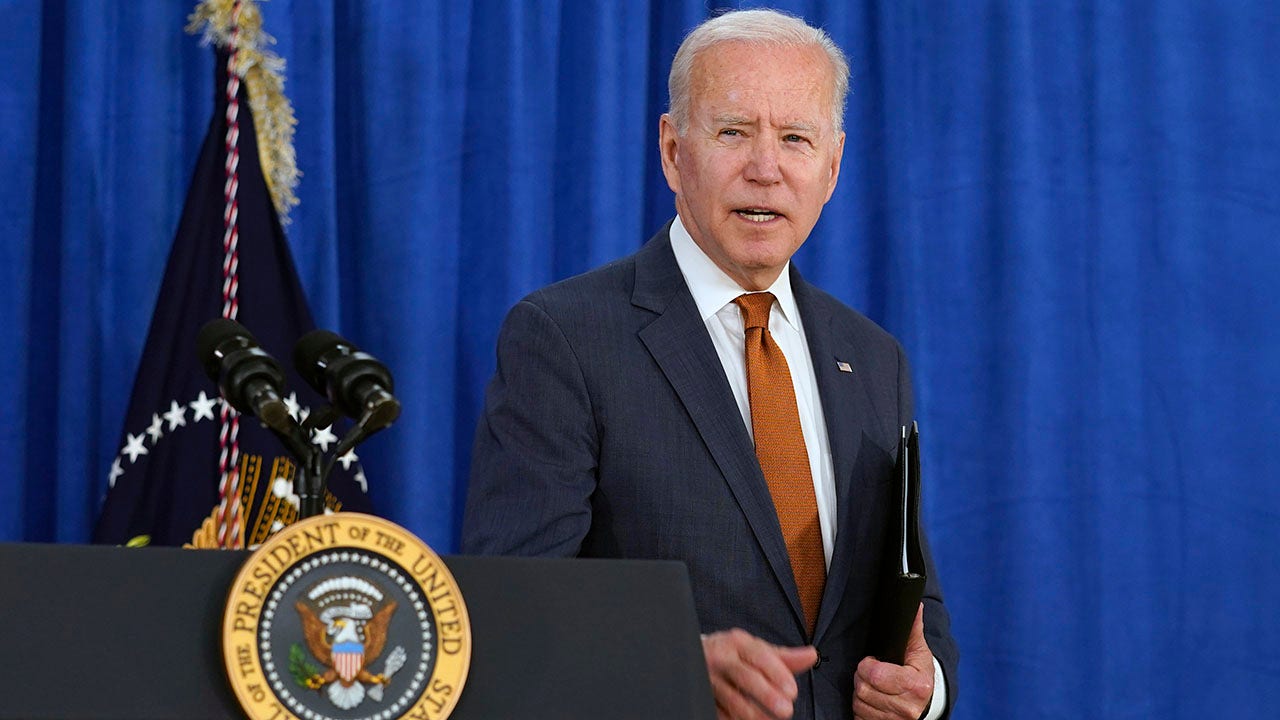Fitness
College students rank wellness activities, campus dining priorities

The spring Student Voice survey on health and wellness found that college students see room for improvement when it comes to campus dining and wellness programs. A little over half of students agree they have access to campus dining halls when they need and want food, but a quarter of respondents say their college or university is getting dining food hall options right, and just 15 percent are enthusiastic about their campus’s wellness class selection.
But what, precisely, do students mean when they say they want healthier, higher-quality food, and more access to it? Likewise, what are students’ preferred wellness activities, and what would boost their use of these resources? Student Voice, a partnership between Inside Higher Ed and College Pulse, conducted another nationally representative survey of 1,200 four- and two-year college students this month to gain more insight into students’ views on these particular issues.
Results are below. But first, a consideration: certain campus amenities have historically been considered luxuries, and whether and how the flashiest of these amenities contribute to student success remain debated. Amid the collegiate mental health crisis, however, college and university leaders all over are now rethinking their campus environments and student well-being programs in order to get “upstream” of the problem (to quote Kevin Kruger, president of the National Association of Student Personnel Administrators). That is to say, food options and offerings like wellness classes may be a bigger part of the student success puzzle than long thought.
Jack Donovan, president of Aramark’s collegiate hospitality division, which works with dining facilities at more than 250 colleges and universities, for example, says that his organization researched the ideal student dining experience post-pandemic and found it’s about social connection and stability.
Students’ needs and tastes can and do change from day to day, and even within the day, he continues. Students are increasingly plant-forward in their food interests; subscribe to a notion of health that is about mind, body and planet; and seek food experiences that are either highly efficient or highly experiential. Food security is also of concern for many in terms of accessibility.
But a common, consistent desire among students is “this home away from home. That notion of, ‘I feel grounded with people that know me, and even though I’m away from home and on this adventure, I want something that calms me and gives me a touchstone that I can count on.’”
Students’ Priorities for Improving Campus Dining
When it comes to improving the quality of dining hall food on campus, what should colleges and universities prioritize? In the new survey, students’ top response is variety and quality of flavors, with about two in five respondents choosing this as a top-three priority, out of 10 options. Fewer ultra-processed foods is next, at nearly two in five students. A third say variety of cuisines, and about a quarter each say local ingredients, organic ingredients and low-sugar foods.
One in five students each says colleges should prioritize customization or made-to-order meals, detailed labeling of ingredients and seasonal menus. About one in 10 students wants to see a commitment to fair trade ingredients.
Results are relatively consistent across demographic groups and institution types.
Asked what colleges and universities should prioritize when it comes to improving access to dining hall food on campus, almost half of students select affordability from a list of 10 options (with up to three responses allowed). Being open early mornings and late nights also matters to nearly half of students. Approximately two in five students say institutions should improve access to food by being open continuously throughout the day.
About a quarter of students each say colleges should prioritize replenishing items though the day or offering to-go meals. One in five students says colleges should prioritize convenient food service locations. Same for ability to use dining points or dollars across campus.
Nearly one in 10 students each would prioritize detailed labeling of ingredients to assist with dietary restrictions or food delivery to locations on campus.
Students with financial aid are not more likely than those without to say institutions should prioritize food affordability, but students on financial aid are slightly more likely to say colleges should prioritize the ability to use dining points or dollars across campus (21 percent versus 15 percent, respectively).
Students at public institutions, meanwhile, are more likely than students at private institutions to cite affordability as a food-access priority, at 51 percent versus 39 percent, respectively. And affordability is a priority to relatively more two-year students than four-year, at 62 percent versus 45 percent.
Jewish and Muslim students are much more likely than the sample over all and more likely than other religious groups to prioritize detailed food labeling for dietary restrictions, at 21 percent and 25 percent, respectively.
Male students are more likely than female students say colleges should prioritize dining halls being open continuously throughout the day to improve food access, at 45 percent versus 35 percent, respectively.
Students at private institutions are more likely to prioritize to-go meal offerings than students at publics (32 percent versus 19 percent, respectively), as are LGBTQIA+ students relative to straight students (29 percent versus 18 percent, respectively).
Elizabeth Riede, executive director of campus dining at Appalachian State University, which serves at least 10,000 people per day, says she and her team rely on a campus dining advisory board of meal-plan holders, digital surveys and other regular feedback to stay current on students’ tastes, preferences and needs. This coming year, App State is also launching a QR code–driven customer experience survey that will allow students to take pictures of and otherwise comment on their food.
Improving dining offerings and access can do more than boost satisfaction. Meals matter, Riede says, in that they’re “important opportunities to build and develop community,” not least for first-year students.
App State students also care about sourcing local and sustainable food, and this remains a university commitment, Riede notes. Similarly, the university is committed to helping the increasing number of students who report navigating dietary restrictions due to allergies or other medical issues.
Like Donovan, Riede has noticed students are increasingly plant-forward. In response to such concerns, App State has added options including a food station focused on whole foods, prepared to order by an allergy-trained chef, with a menu geared toward accommodating the “big nine” allergies.
At the same time, students want more to-go style meals, with mobile ordering and pickup, she adds. Riede says App State is one of only two self-operating dining programs in North Carolina’s public university system, which allows it “more flexibility to respond to the changing needs of our students,” including affordability.
“For us, it really does start with them,” Riede says of students. “We are first and foremost in the customer service business, and we see ourselves as an integral part of their college experience.”
Students’ Preferred Wellness Activities and Barriers to Access
What are students’ preferred wellness activities or resources, whether or not those options exist on their campus? The top response by far is going to the gym, at nearly three in five respondents (who could select up to three of 15 options). About a quarter of students each like the following activities: groups walks or hikes, exercise classes, recreational sports, or yoga classes.
Nearly one in five students prefers cooking workshops or therapy dog events. About one in 10 students prefers art therapy classes, mindfulness and meditation classes or workshops, or stress management workshops.
Four-year college students are more likely to prefer going to the gym than are two-year college students (60 percent versus 47 percent, respectively) and to like group walks and hikes (30 percent versus 21 percent).
Relatively more men than women prefer going to the gym (68 percent versus 51 percent, respectively) and recreational sports (32 percent versus 17 percent).
Women, meanwhile, are more likely than men to prefer exercise classes (31 percent versus 21 percent), yoga (29 percent versus 12 percent) and art therapy classes (15 percent versus 5 percent).
LGBQTIA+ students are less likely than straight peers to prefer exercise classes (19 percent versus 29 percent, respectively) and recreational sports (16 percent versus 26 percent) but more likely to prefer therapy dog events (22 percent versus 15 percent) and mindfulness and meditation classes or groups (17 percent versus 8 percent).
Going to the gym is more popular among students in small to large cities (n=850), at 60 percent of respondents, than among suburban or rural respondents (n=400), at 52 percent.
Asked which of several factors would allow them to use more wellness facilities and resources on their campus, 40 percent of students choose hours that fit their schedules. Proximity is next, at 31 percent of respondents.
Twelve percent of students each say variety of offerings and quality of facilities would boost their use of wellness facilities. Four percent of students say none of these factors would make them use more campus wellness facilities and resources.
Students with financial aid are more likely than those without to say hours that fit their schedule matter most, at 41 percent versus 34 percent, respectively. Four-year college students are more likely than two-year students to say proximity matters most, at 32 percent versus 25 percent, respectively.
For students attending institutions in large urban areas (n=311), proximity is the No. 1 factor that would boost their use of wellness facilities and resources, at 36 percent of respondents. Students at institutions in small to medium cities, suburban and rural areas all rank hours that fit with their schedules as most important.
Jennifer Knerr, assistant director of the Wellness Center at the University of Wyoming—a free facility within the campus fitness center featuring everything from a Zen den and an immersive wellness pod to health seminars and free contraceptives—says, “We want to have something for everyone. We want to be a place for everyone. And so we do try to offer that wide variety of programming, where we might catch this group of people, and then another program that might catch this group of people and pull them into our Wellness Center.”
Knerr says the center’s most popular offerings are its massage chairs and its puppy playdates and kitty cuddle times. Yet Knerr and her colleagues define wellness as much more comprehensive than massages or fighting stress with cute animals. It’s a multidimensional concept touching on physical, intellectual, emotional, social, occupational, environmental, spiritual and financial health, all of which are connected.
Kitty cuddles is a popular program for students at the University of Wyoming’s Wellness Center.
“It’s an active process and it’s associated with your intentions, choices and actions, and it can change from day to day or year to year,” Knerr says. “I also let students know wellness is individual, because your wellness is not my wellness—like your wellness might be taking a nap and my wellness might be going for a walk. So we try to be really individualized as well as offer a lot of different programs.”
Erin Patchett, director of administration and assessment for campus recreation at Colorado State University and board member of NIRSA, an organization of leaders in college recreation, says that many of her efforts are about creating an inclusive recreation environment for everyone on campus. (The department’s #WeREC campaign is about respecting boundaries, empowering oneself and one’s friends, and caring about each other, for example).
When it comes to recreation, Patchett says, “there’s a focus on the physical piece, moving your body and hopefully finding joy in movement,” in addition to stress relief and balance. But there is also a “a big sense of belonging connected to these efforts. Participating in recreation services and facilities can often help people find their community on a campus.”

Fitness
5 exercises that help lower cholesterol levels naturally – Times of India

The most simple and effective way is walking
Foods That Can Help Lower Your Cholesterol Levels
One of the easiest and most accessible exercises to lower cholesterol is walking. Studies show that walking at a medium pace for 30 to 60 minutes most days of the week can significantly lower LDL cholesterol and raise good cholesterol (HDL). Research published in the journal “Arteriosclerosis, Thrombosis, and Vascular Biology” suggests that walking can help reduce bad cholesterol by up to 7%. So, lace up your sneakers and take a stroll in your neighbourhood or a nearby park.
How does pedalling help?
Cycling is another effective exercise for lowering cholesterol levels. Whether on a stationary bike or riding through the streets, cycling helps increase HDL cholesterol while lowering LDL cholesterol. A study conducted by the “Journal of the American Heart Association” found that adults who cycled regularly experienced a significant reduction in LDL cholesterol levels and improved overall cardiovascular health. Aim for 30 minutes of cycling, three to five times a week, to see benefits.
No Gym Needed: Try This Effective Home Workout To Get Fit Quickly
Jogging
Jogging is a fantastic way to boost heart health and reduce cholesterol levels. It helps burn calories, improve cardiovascular fitness, and increase HDL cholesterol. According to a study in the “Journal of the American College of Cardiology,” regular jogging can significantly reduce LDL cholesterol levels and lower the risk of heart disease. Add jogging into your routine for 20-30 minutes, three to four times a week, for optimal results.
Yoga
Yoga might not be the first exercise that comes to mind when thinking about lowering cholesterol, but it can be incredibly effective. Yoga helps reduce stress, which is linked to higher cholesterol levels. Research from the “Indian Heart Journal” found that practising yoga regularly can help reduce LDL cholesterol and improve heart health. Try to include yoga sessions for 30 minutes, three times a week, focusing on poses that enhance cardiovascular health.
Build muscle, burn cholesterol
Strength training is essential for overall health and can help lower cholesterol levels by improving body composition and increasing metabolism. A study published in “Medicine & Science in Sports & Exercise” found that resistance training helped lower LDL cholesterol and raise HDL cholesterol in adults. Add strength training exercises, such as weight lifting or bodyweight exercises, at least twice a week for the best results.
Fitness
How an innocent comment from his 3-year-old inspired 1 dad to lose 160 lbs

Welcome to Start TODAY. Sign up for our Start TODAY newsletter to receive daily inspiration sent to your inbox — and join us on Instagram!
Jason Henriques clearly remembers what his 3-year-old son, Wyatt, said one day. “We were sitting on the dining room floor playing and he said, ‘Daddy, when I get big like you, I want a big tummy like you,’” Henriques tells TODAY.com.
At the time, Henriques was a 37-year-old with obesity, and his weight and diet were affecting his health. His asthma was so bad he was hospitalized to treat it about once a year. He had allergies, herniated discs, torn ligaments in his knees and gastrointestinal problems like colitis, gastritis and gallbladder issues. And Wyatt’s comment made him realize he needed to be a better role model for his children.
He started his fitness journey by walking and rowing
“I got up the next day, put Wyatt in a stroller, and started walking. From that day on, for months, we walked three to 12 miles a day. My mindset was, ‘I have to do this. I have to be a better parent. I have to be a better role model. I completely changed my mindset and went all-in,” he says.
When Henriques started walking, he was self-employed as a photographer. “I had my own schedule, and I made the time. Walking was my number one priority in the morning. I pushed everything else to the side for a little while,” he says.
While walking worked well for him for a few months, when the winter weather started to set in near his Monroe, Conn., home, he wanted to find a new way to improve his fitness. So, he joined a gym and took advantage of a free personal training session they offered.
The trainer asked him to row 1,000 meters on a rowing machine. He was hesitant at first. “It was new, it was challenging and I was in a routine of walking, jogging and cycling. Rowing shook it up, and change is hard sometimes. But I loved it because it didn’t have the impact of running or cycling on my joints. I felt great,” he says. He kept working out with the trainer, and he also joined a CrossFit gym. Rowing was often part of his workouts.
Looking for a challenge, he ran a turkey trot 5k that Thanksgiving. That got him even more interested in running and exercise. “I just fell in love with the whole world of fitness and how I felt afterwards,” he says.
He loved how rowing and running balanced each other: “Rowing is the perfect counterpart to running because you can build your endurance on the rower without the impact. And once you hit the streets, you can use rowing as recovery from your running.”

He inspired his whole family to find their competitive streak
It’s exciting to be into fitness as a family, and it strengthens our bond, too.
Jason Henriques
As his fitness improved, he and his wife Maggie started competing in obstacle-filled Spartan races along with their children, Wyatt, now 11, Presley, 8, and Hudson, 3. Last year, his two oldest children finished a triathlon. “It was so cool watching that. It’s exciting to be into fitness as a family, and it strengthens our bond, too,” he says.
Henriques did his first triathlon on his own, running and biking near his home and swimming in a nearby lake. “I didn’t care if anybody knew about it. I just wanted to do it for me. That was something never in my life I thought I would do,” he says.
He recently did a 48-mile row, rowing four miles every four hours for 48 hours. He also pushed himself to run a half-marathon on his own, and eventually, he would like to run a full marathon.

He cleaned up his diet with a food journal and growing his own food
When Henriques started exercising, he and his wife also got rid of all the junk food in the house. He realized he needed to learn what his body needed and what triggered his asthma and allergies.
Tracking his macronutrients and keeping a food diary helped. He discovered that his body doesn’t like dairy, refined sugar or processed carbs, and onions make his gastrointestinal issues worse. He didn’t think he was an emotional eater, but he found he was turning to food when he was bored. These insights helped him eat in tune with his body.
He also started to pay more attention to where his food comes from. He and his wife recently bought a historic home that they are renovating. “We cleared a quarter-acre of land we’re going to use as a garden. We built a huge chicken coop, and we have 19 chickens so far. We’re basically starting a homestead,” he says.
They plan to grow a lot of their own food, and they also buy meat and produce from area farms. He acknowledges that buying fresh, local food can be expensive compared to the packaged and processed food he was eating before, but he feels it’s worth it: “I’m investing in my health now versus having to spend the money on healthcare later. I’m investing in the quality of my life.”
He and his family now prioritize meals together. “We sit at the table together to eat. We cook together a lot of the time. It has strengthened our family bond,” he says.

He’s seen huge improvements in his health
In the first year after his mindset change, Henriques lost 160 pounds, and he’s maintained his weight since then. Between his weight loss and his diet changes, he no longer has gastrointestinal issues. His asthma has mostly cleared up, his allergies are much better and most of his joint pain is gone. He still has herniated discs, but strengthening his core has helped protect his spine.
At one point, a friend who is a gastroenterologist suggested that Henriques might want weight-loss surgery. But after four months of focusing on his health, he had lost 60 pounds, and he no longer qualified for the procedure — they told him if he wanted to have it, he would need to gain some weight: “I walked out of that office and never went back. That was all the motivation I needed to keep going.”
And now? “I feel better at 44 than I did when I was 24,” he says.

His health changes led to a new career
With his focus on rowing, Henriques caught the attention of the team at Row House in Monroe, Conn. They invited him to audition as a coach, and he got approved and started coaching in the mornings before work. He says, “I got even stronger as a rower, and I had the potential to help other people who might be going through something I’ve been through. What’s better than that?”
He feels that his health struggles make him a better coach. “I can relate to people who have them, and I can be more strict on form because I know being out of alignment the tiniest bit can aggravate some injuries,” he says.
When he coaches, he shares stories about his life and his struggles. “Somebody else in that room might be going through something similar. They can relate. I really like to build those connections,” he says.
When the general manager position at Row House opened up, he decided to make a career change: “It was a little bit scary, but it was one of the best decisions I ever made.”
Looking back, he appreciates how an innocent comment from his son put him on a new path. “That moment is what changed not just my health and fitness, but the whole trajectory of my life,” he says. “And my three kids look at me in a whole different light. Now I’m doing this parenting thing right.”
Fitness
Pickle juice and group bonding: The health and fitness secrets of the Euro’s top teams

Sitting in front of the television watching the Euros all summer might be fun, but it’s not particularly healthy. By the time the football tournament reaches its final stages, some of us have been almost completely sedentary for almost a month, refuelling on a diet of heavily salted snacks and carbonated drinks. But, if you pay close attention, you might actually be able to improve your health and fitness while bingeing on non-stop football matches this summer.
The Euros is basically a gathering of the world’s most finely tuned, expensively developed young athletes. “There was a time when football lagged behind other sports in terms of sports science,” says James Witts, author of Training Secrets Of The World’s Greatest Footballers: How Science Is Changing The Modern Game.
“But nowadays, the sheer amount of money involved in the game means that elite football is at the very forefront of athletic conditioning. It’s about basic accountability: if you’re paying a player £300,000 a week, then you’d better make sure they are keeping in the best shape possible.”
For this reason, the latest trends in fitness, diet, recovery and sports psychology are all being driven by the Beautiful Game. Here’s what normal people with busy lives can learn from the training practices of Euro 24’s eight quarter-finalists.
Drink pickle juice like England
“Every team at the tournament will focus on muscle recovery because the break between matches is so short,” says Nicolas Dyon, a football fitness coach who has worked with elite clubs in France and Switzerland. “Combating cramps in games requires proper hydration.”
When Kieran Trippier, England’s left back, suffered cramps in the opening match against Serbia, he was seen drinking a small sachet of ‘pickle juice’ at the side of the pitch. The unpleasant-sounding drink has been found in studies to reduce cramp 40 per cent faster than drinking plain water. Not only does it help replace lost salts during exercise due to its sodium potassium and vinegar content, it is also thought to help trigger a reflex in the mouth which sends signals to the brain to stop muscles from cramping.
-

 News1 week ago
News1 week agoToplines: June 2024 Times/Siena Poll of Registered Voters Nationwide
-

 Politics1 week ago
Politics1 week agoPopular Republican and Trump running mate contender makes first Senate endorsement in 2024 races
-

 News1 week ago
News1 week agoNew Jersey gamer flew to Florida and beat fellow player with hammer, say police
-

 Politics1 week ago
Politics1 week agoThe many faces of Donald Trump from past presidential debates
-

 News6 days ago
News6 days agoVideo: How Blast Waves Can Injure the Brain
-
/cdn.vox-cdn.com/uploads/chorus_asset/file/25505687/VERNE_Exterior1.jpg)
/cdn.vox-cdn.com/uploads/chorus_asset/file/25505687/VERNE_Exterior1.jpg) Technology1 week ago
Technology1 week agoRimac is shifting from electric supercars to robotaxis
-

 Politics1 week ago
Politics1 week agoSupreme Court rules to allow emergency exceptions to Idaho's abortion ban
-

 World1 week ago
World1 week agoUS journalist Gershkovich on trial in Russia over spying charges he denies




















